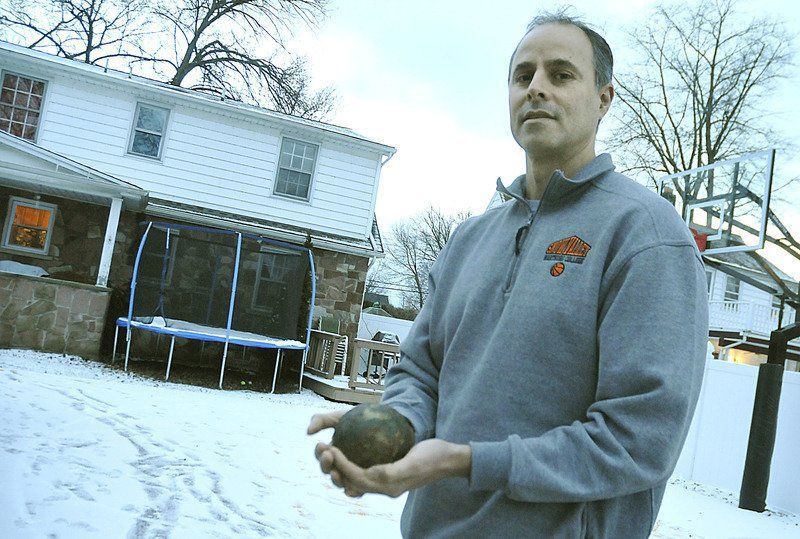Teacher thinks backyard cannonball was fired from historic ship
Published 10:45 am Monday, January 12, 2015
A New York history teacher believes a cannonball, found his in backyard, may have been fired from a 17th century ship.
The ball was found near a construction site where, more than 400 years ago, many believe a European ship, the Griffon, was built on Cayuga Island.
Annie Esposito was making lunch for her kids in the summer of 2014 when a crew working in her back yard found an old cannonball.
Her husband, Mike Esposito, a Niagara Falls High School history teacher, was elated.
While the crew had left with the find, Mike reclaimed the relic and is hunting for proof that the ball came from the Griffon.
“I read somewhere that the Griffon fired five shots before leaving the area,” he said.
Esposito believes the cannonball is just the type of three-dimensional show-and-tell piece that might spark some excitement in his classes over his area’s most renowned history. The ship was built in 1679 at the behest of the famous French explorer LaSalle, officially known as René-Robert Cavelier, sieur de La Salle.
Former city historian Paul Gromosiak is encouraging the Espositos because he also believes the cannonball is from the Griffon. Gromosiak said as the boat was being built in 1649, the local Seneca tribe was watching suspiciously.
“The French were nervous the whole time they were constructing the boat,” Gromoziak said. “They couldn’t go further down river. They didn’t want to be too close to the falls.”
Gromosiak said the Cayuga Island location was a good place to build the Griffon because the island was protected from storms and the ship was close to the water in case the native Americans became too hostile.
“The French fired the cannons to celebrate the completion of the Griffon,” he said, but added that they also may have fired the cannons to frighten the Senecas.
“Chances are the cannonball that Esposito found could be once of those cannonballs,” Gromosiak said. “I’m convinced of it.”
Unfortunately, the history teacher has been trying for eight months to get someone else to help him determine the origin of the cannonball. No one he has contacted seems much interested in trying to help him. An expert on military antiques says the lack of interest is pretty common.
“Generally speaking, if you have a cannonball, that’s about the response you get,” said Craig Gottlieb, a military antiques expert who appears occasionally on the cable show “Pawn Stars.”
Gottlieb, contacted by the Niagara Gazette at his home in Solana Beach, California, said there’s only one thing that appeals to historians, collectors and antique dealers — hard evidence.
“A cannonball’s worth something, maybe a few hundred bucks,” Gottlieb said, “and that’s what it’s going to be worth until a person can connect it with a locked-tight story.”
Meanwhile, Esposito, who is also the girls basketball coach at the high school, continues his quest with an athlete’s perseverance, determined to learn more about his backyard find. He has calls in to the University at Buffalo’s archeology department and is hoping to talk soon to an expert in San Antonio, Texas, and another in Toronto. He plans to keep the ball safely tucked away in a secure location, just in case it has value.
He’s also hoping that, as the word gets out about the cannonball, more people will join his quest to uncover the details of its history.
“I’m excited. I think it’s from the Griffon, I really do,” he said. “Paul Gromosiak thinks it’s from the Griffon as do other people I talk to. Now, it’s just proving it. I’m going to keep on looking for leads.”
DeLuca writes for the Niagara Gazette.



